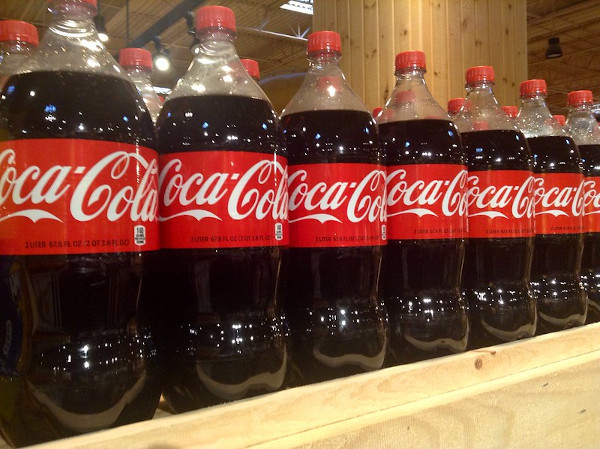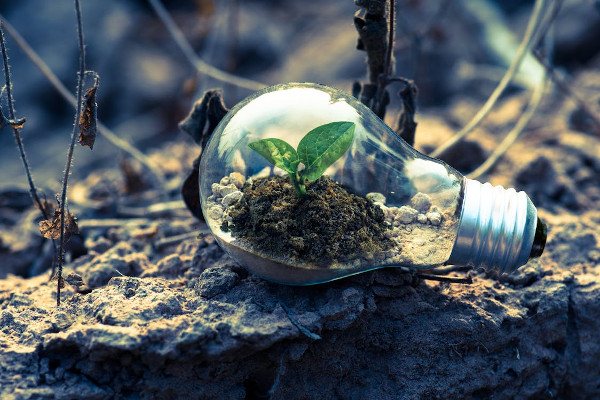The Rise of Greenwashing

Early last year, Korean beauty brand Innisfree found itself embroiled in environmental controversy and was accused of greenwashing. They had recently launched an eco-friendly version of their bestselling green tea serum as part of their “Less Plastic” initiative: The serum now came wrapped in a paper bottle and the container was 100 percent recyclable. Then a user cut one of the paper containers up and discovered a plastic bottle inside. They shared their discovery on Facebook, prompting the public outcry.
Innisfree apparently did not mean to suggest that the package was made entirely of paper, never mind the fact the packaging was cheekily labeled “Hello, I’m Paper Bottle.” Instead, it was the label what was made of paper and the bottle itself was made with 50 percent less plastic. In fact, the box the serum came in provided instructions on how to separate the paper outer layer from the plastic bottle so they can be recycled separately. But it may be difficult to argue that the “paper” bottle and the labeling itself made that clear enough. And the implication is that the brand deliberately tried to deceive consumers with intentionally vague and unclear labeling, to the point where a buyer purchasing their serum would have assumed they were indeed buying a product inside a bottle made entirely out of paper.
Greenwashing is a broad term, though it defines some specific tactics. It’s generally attributed to the practice of brands and corporations of overstating their environmental impact insomuch as the way they are supposedly helping the environment.
One of the most infamous modern cases of greenwashing that many may remember is perhaps the Volkswagen emissions scandal, where the carmaker admitted to cheating by installing a software in their engines that could detect when it was being tested so it could change its performance and appear to be more environmentally friendly than it really was.
Greenwashing is also relatively new; the term was coined in the 1980s (even though its practice has been around before then, knowingly or not) and the Oxford Dictionary only recognized it as an official term in 1999. It’s widely believed that Jay Westerveld coined the term “greenwash” around 1986 in an essay he wrote criticizing a popular resort’s tactic of urging its guests to reuse towels to help save the environment. That may prompt a doubtful double-take by today’s standard, when it would be clear to anyone that the hotel is just trying to cut costs by not washing as many towels.
But in the mid-80s, the term “climate change” had only just begun making the rounds in science journals (the term in this iteration appeared for the first time in 1979), so anything that sounded like it was doing something for the environment was taken at face value. In fact, just one year prior to the publication of Westerveld’s essay, Chevron had run its widely successful “People Do” campaign, an Effie Award winner ad strategy that showed how Chevron was helping the wildlife in its native habitat. This included an ad about how a tiny butterfly species that lived in lands owned by the oil giant was protected and was able to thrive in the sanctuary that was part of the Chevron refinery off the cost of California.

Now, not only is referring to a land that was part of an oil refinery as a “sanctuary” for endangered species widely deceiving, award-winning campaign or not, but many have also pointed out that the pains Chevron was going through to “protect” these wild lands were mandated by law, and did not come from an altruistic sense of environmentalism. Plus, it’s not true, as many studies have shown the devastating side effects of oil and oil refineries in wildlife and its habitat.
This may seem like an extreme example of greenwashing on Chevron’s part, certainly by today’s standards with the information we now have, but the practice is still widely used today: Coca-Cola openly claims that it aims to collect and recycle a bottle or can for each one it sells, even though it was still found to be the world’s most polluting brand in plastic waste.
There are several reasons that caused this “booming” in greenwashing, including nonexistent laws to codify and define the practice; consumers’ enthusiasm to do anything that may remotely sound or look like it’s helping the environment during these times of irreversible climate change; and corporations’ use of more strategic, vague language in marketing, which has made greenwashing harder to spot and why it is more prevalent than we think.
Something as simple as a green package, for example, may be enough to give the impression of a product being environmentally friendly and trigger consumers’ expectations of what usually comes in green packaging. This is especially true in the case of known brands which presence is ubiquitous in supermarkets and home pantries, like Huggies diapers, for example. Known for its eye-catching red wrapping, Huggies also has a “green” line that’s billed as “pure and natural” that, obviously, comes in a green packaging. There’s nothing impactfully different in the “Pure and Natural” Huggies diapers except that they’re made with organic cotton – this “green” diaper will still take 450 years to decompose in a landfill.
Another tactic brands use is the well-known line of “now 50 percent greener” or some variations thereof. It sounds impressive, but if a product was only 2 percent green before, being 50 percent greener means it is now only 3 percent green. And of course, there is the beloved “carbon neutral” line that big brands love to throw around, although it can mean different things to different corporations depending on how they arrive at being carbon neutral.
The term “carbon neutral” itself is questionable. It’s a synonym for net zero, another favorite and overused expression that provides more insight into what it actually means because it is in its name. “Carbon neutral” and “net zero” don’t actually mean “zero”; they mean “net.” In other words, corporations can offset their carbon footprint to arrive at “net zero.” When Coca-Cola supposedly recycles one can or bottle for every can or bottle it sells, Coca-Cola is offsetting in order to arrive at “net zero” or “carbon neutral.”

Hopper, for example, the popular travel-booking site and app, has a carbon offset program that promises that the company will plant up to four trees for every flight booked on Hopper. Planting more trees is, of course, always a good thing. But the viability of planting trees to thwart the effects of climate change is dubious at best. In fact, scientists seem to agree that planting more trees is a principled quest, but not one that will holistically address the root causes of climate change. The best way to address it remains the reduction of emissions humans produce—emissions, say, from all those flights we’re booking on Hopper.
That brands are racing to prove their commitment to the environment (or the appearance of, at least) is perhaps not surprising. With consumers’ newfound predilection for greener alternatives, brands have had to readjust their strategies, from sourcing to production to getting their products off the store shelves. But these changes are costly, and corporations have to be able to show them off and brag about how they are doing the most to court consumers, this with various degrees of transparency.
For instance, on their events introducing some new product, Apple likes to assert that the company is currently 100 percent carbon neutral, and all its product will be carbon neutral by 2030. This is a worthy goal, to be sure, and it sounds impressive that it’s already 100 percent carbon neutral, especially for one the most profitable companies in the world and the largest seller of electronic goods. What it doesn’t specify during its event, however, is that it is carbon neutral in its direct operations (meaning, in its offices, stores, etc.). You have to find the nitty-gritty data on sustainability to get these details, which is also where the company explains that its direct operations have reduced its carbon footprint to 2 percent of the company’s total; which is really just another roundabout way of saying that Apple’s direct operations account for only 2 percent of the company’s carbon footprint (Apple has at least, to its credit, reduced its carbon footprint by 40 percent since 2015).
Meanwhile, “green” lines of entire industries have popped up everywhere to try to meet consumer demand, with one of the clearest examples of this being the beauty industry. Proclaiming to be “all natural” and “non-toxic” or free of “harsh chemicals” is a pervasive type of branding for beauty products, from moisturizers to sunscreens.
But because there is no standard definition for “clean” or even for what constitutes a “harsh chemical,” these sustainability claims can vary wildly. It’s easy to be “clean,” which is just another word for “green,” just for the sake of “clean” beauty. The brand “Crunchi” can demonstrably be called a green brand, as it does use organic, vegan, natural ingredients. It has a whole list of banned ingredients that the brand won’t use in their products, like phenoxyethanol, a synthetic ingredient that is commonly used as a preservative. This ingredient is banned supposedly because phenoxyethanol is a known allergen and may therefore cause irritation on the skin (and probably also because it has a chemical sounding name and if we can’t pronounce it then we’re supposed to think that it’s likely toxic). But in its “toxin-free” products, Crunchi also uses ingredients like orange extract, lemon extract, and lavender oil, all of which are much more likely to cause irritation to the skin than the maligned phenoxyethanol – even when watered-down, lavender oil is a common allergen, organic or not. In other words, just because it’s “natural” doesn’t mean it’s better or even safer.

To be clear, many of these brands do try to have ethical, ingenious programs in place to try to reduce their carbon footprint. The Australian beauty brand Kevin Murphy, for instance, made a commitment a couple of years ago to use only plastic pulled from the ocean to manufacture the packaging of its products. When that proved to be impossible, Kevin Murphy was transparent about its failure and pledged to a more realistic timeline and sourcing strategy. Even Crunchi uses little plastic in its packaging, opting instead for glass packaging (although while glass is a giant step up from plastic and infinitely recyclable, it doesn’t necessarily solve the “single use” problem that most packaging presents, especially when they are small containers for skincare products and, indeed, glass may not be more climate-friendly than plastic).
Instead, it’s the marketing of these products that oftentimes feels deceitful because it’s doing what marketing does best: sell us something, this time by making a company or product appear more environmentally friendly than it really is. Brands are defining “green” to fit into their narratives, thereby reshaping what a green product even is. For Crunchi, that is banning a common synthetic preservative; for Kevin Murphy, that’s using more recycled material in its packaging, since “clean” and “sustainable” often go hand in hand.
Early last year, a government study from the United Kingdom, in conjunction with the Netherlands, found that as many as 40 percent of green claims made on websites by global brands are misleading customers. Also only last year, the Dutch government finally published “rules of thumb” guidelines to assist businesses from making false or misleading green claims.
Meanwhile, in the U.S., these guidelines were first published in 1992 and they have not been updated since at least 2012, when Lyft and cheap LED lightbulbs did not even exist. With so little oversight, it is not surprising that greenwashing has been able to propagate so easily and broadly.
Even Environmental, Social, and Governance (ESG) criteria that investors try to use to gauge a company’s environmental stewardship has no set standards – companies come up with their own. As with most things in a capitalist society, the best consumers can do is be smart and informed buyers: Be on the lookout for green buzzwords like “all natural,” “non-toxic” or “carbon offsetting;” question green claims that choose verbose and opaque language over direct and transparent statements; and all in all, approach all sustainability claims made by corporations with at least a little bit of cynicism, especially when they continuously fail at making true on their promises.
Author Bio:
Angelo Franco is Highbrow Magazine’s chief features writer.
For Highbrow Magazine
Image Sources:
--Ivan Radic (Wikimedia, Creative Commons)
--Pxfuel (Creative Commons)
--Pxfuel (Creative Commons)
--Mike Mozart (Flickr, Creative Commons)
--Singkham (Pexels, Creative Commons)































































































































































































































































































































